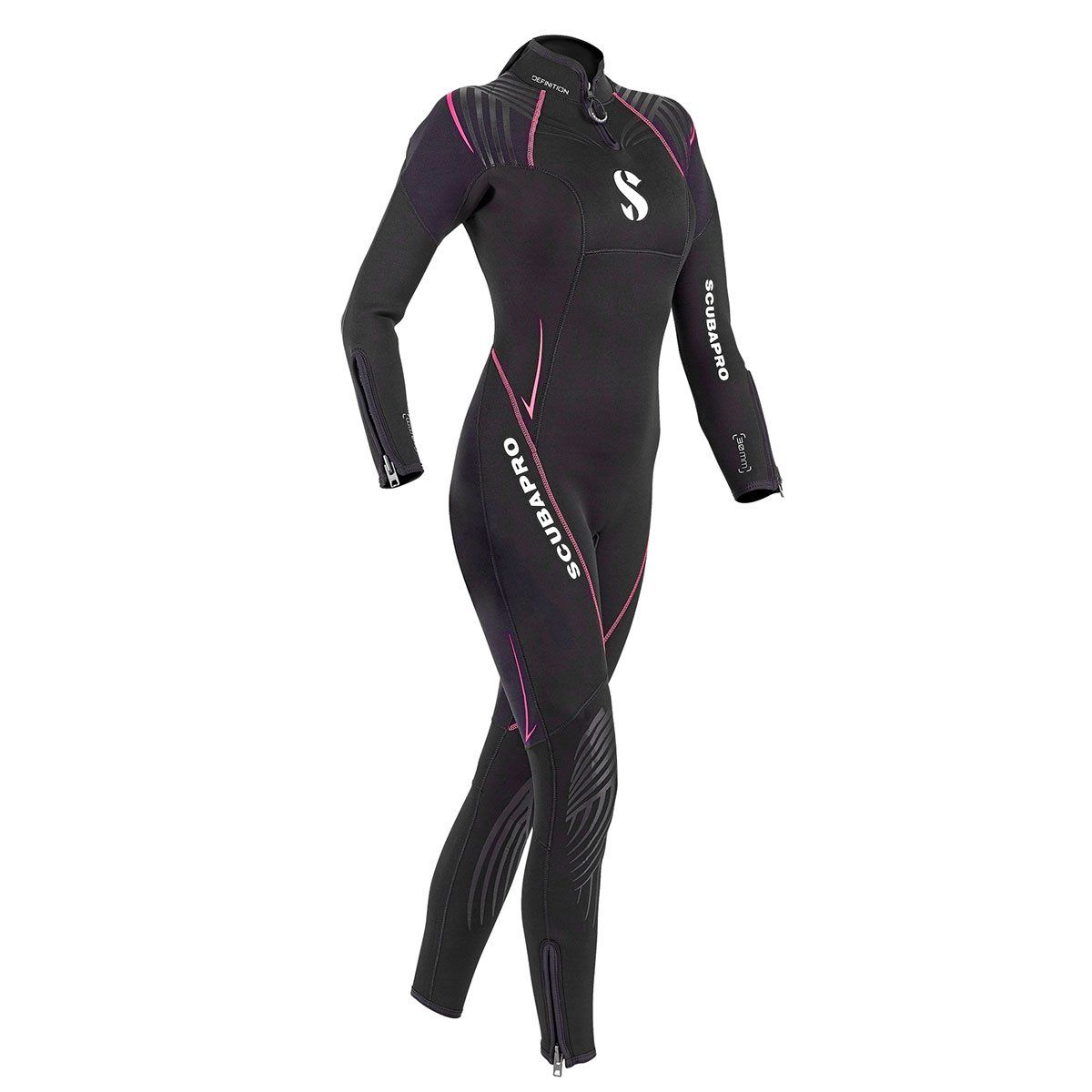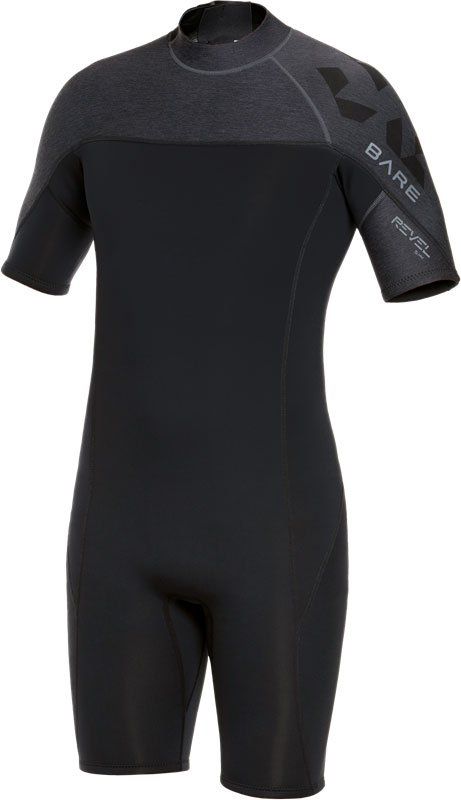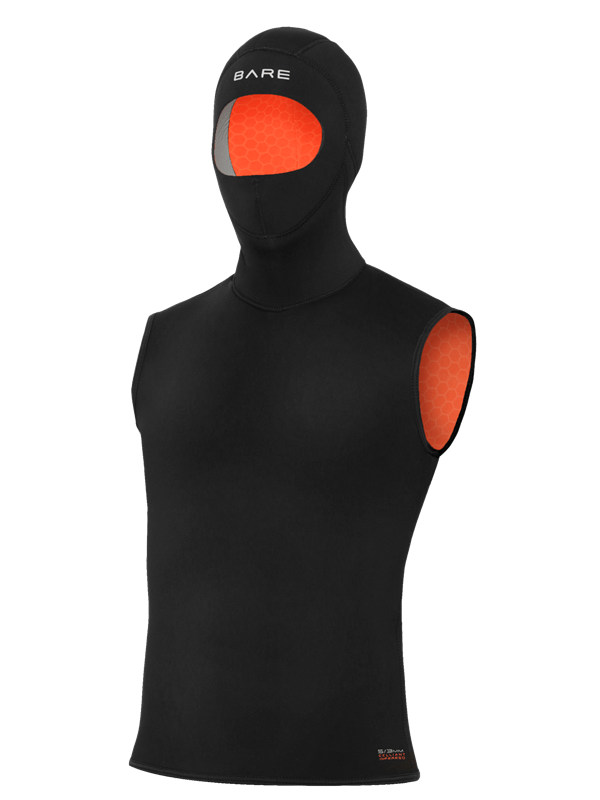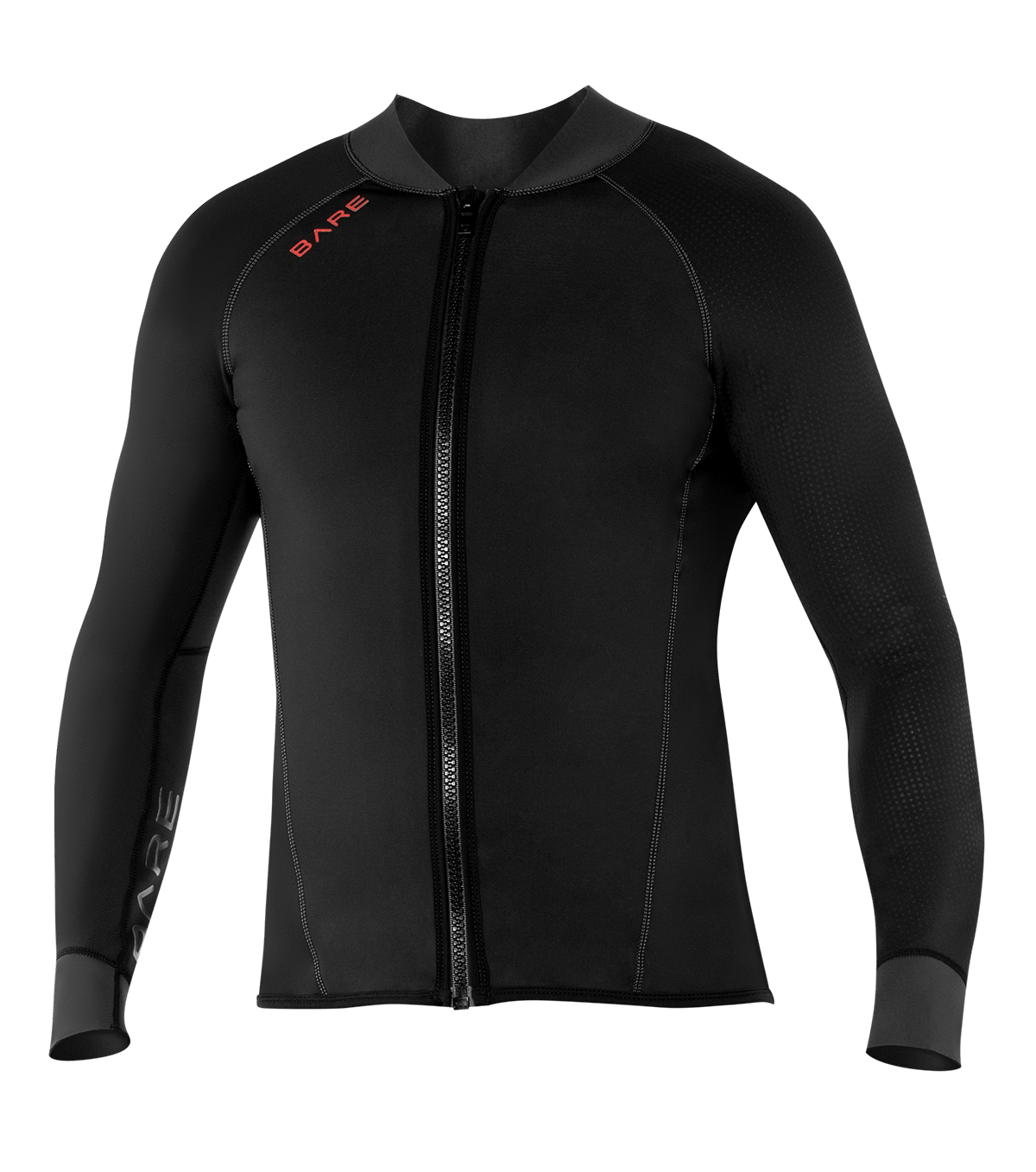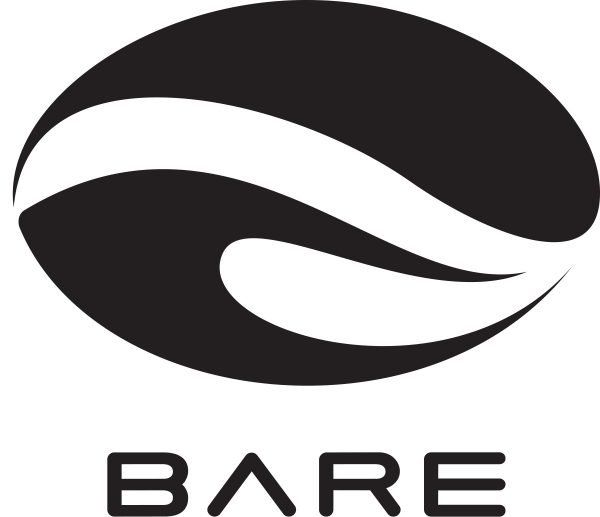Purchase Dive Computers and Instruments
Wetsuits
How a wetsuit works
A wetsuit keeps you warm by trapping a thin layer of water between the suit and your skin. Your body warms up the water and you feel the warm water inside the suit instead of the cold water outside the suit. Remember, in order to get the most out of your wetsuit you've got to put some water into your wetsuit!
Wetsuit do more thank keep you warm. That's why we call them exposure suits. Wetsuits protect you from things that scrape and sting. They also protect you from too much sun!
Wetsuits are made out of neoprene, a material that is basically foam rubber made to be worked like fabric. The tiny air bubbles trapped inside the material provide the insulation you need to stay warm. Not all neoprene is made the same. If you have a triathlon, swimming, or surfing wetsuit you will destroy it if you use it for diving. The neoprene used to make wetsuits for surface sports will "crush" at depth. Your 3.0MM suit will become a 1.0MM suit and it will no longer keep you warm.
How to fit a wetsuit
In order for a wetsuit to do its job it has to be able to trap water in the suit. That means you have to have snug wrist and neck seals or the warm water will get flushed out by cold water every time you move. In addition to snug seals a full body suit should have arms that reach your wrist bones, legs that reach your ankle bones, and kneepads that cover your knees and upper shins.
Check the size by moving your arms around and raising them over your head. Bend over at the waist or kneel on the floor. You should be able to move freely without pulling too tightly on any of the seams or the zipper.
Wetsuits are available in mens, women's, and kids sizes.
Thickness
Common thicknesses include 1.5MM, 3.0MM, 5.0MM, 7.0MM. The larger the number, the thicker the material and the warmer you will be. Unfortunately, thicker material makes a suit harder to put on and take off. It's a trade-off, warmth for ease of use.
The thickness you need depends on your tolerance for cold. Most divers use a 3.0MM wetsuit throughout the Caribbean where the water temperature is about 80 degrees, thinner suits for warmer destinations, and thicker suits for colder destinations. A 5.0MM suit is common in Hawaii where the water temperature is about 75 degrees.
The good news is you don't have to buy a different wetsuit for every destination. You can layer! If you have a 3.0MM suit and need a little more protection you can add a hooded vest, a short suit, or a neoprene shirt/vest. You have lots of options to choose from to get just the right level of comfort.
Style
The most common style of wetsuit is the full body jumpsuit. It covers everything but your hands, feet, and head. Short suits or "shorties" have arms that stop above your elbows and legs that stop above your knees. These days you can also by neoprene short and long sleeved shirts and short and long pants. Hooded vests are also popular with dive travelers.


